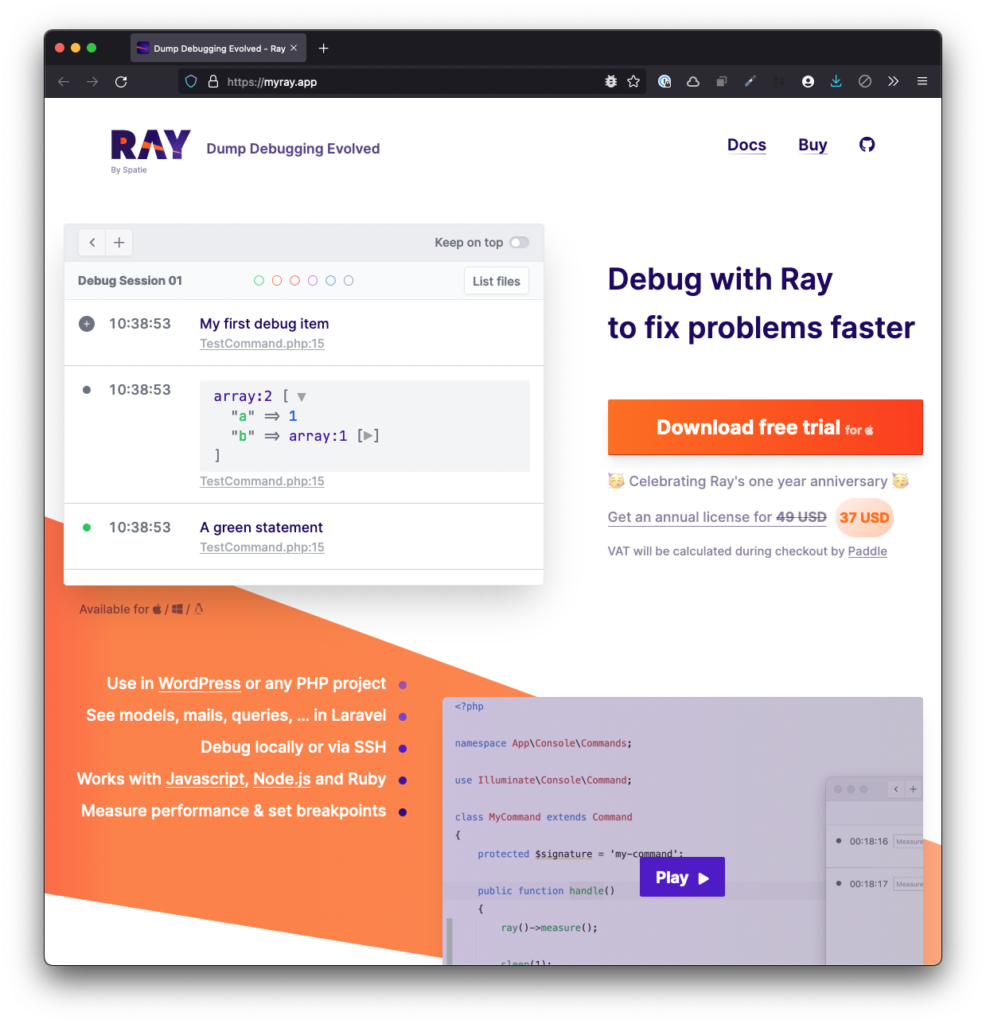TL;DR: We’ll see what Ray looks like when rendering data, data structures, and other information in the context of a custom WordPress plugin. We’ll also see how to leverage some of its built in functionality for making data structures much more readable from how we’ve historically been able to do so.
📝 A Note About the Ray Plugin
When it comes to actually using the Ray application within the context of WordPress, I’d like to bring some clarity to the different ways in which it can be installed.
- Ray can be installed as a Composer dependency which is what we did in the previous article.
- Ray can be be installed a plugin via the WordPress Plugin Repository.
- Ray can be installed as a must-use plugin by cloning the repository from GitHub, placing it into your
mu-pluginsdirectory and then updating environmental variables as per the documentation.
All of these are viable options. I prefer to use the first option because I’m a fan of Composer and managing my dependencies that way so this guide will be following that approach.
If you opt to use any of the approaches, great! This series, however, will not offer guidance on those methods.
⚠️ If you’ve not already set up your environment, please read the previous post and make sure you have the free version of Ray installed.
Continue reading

